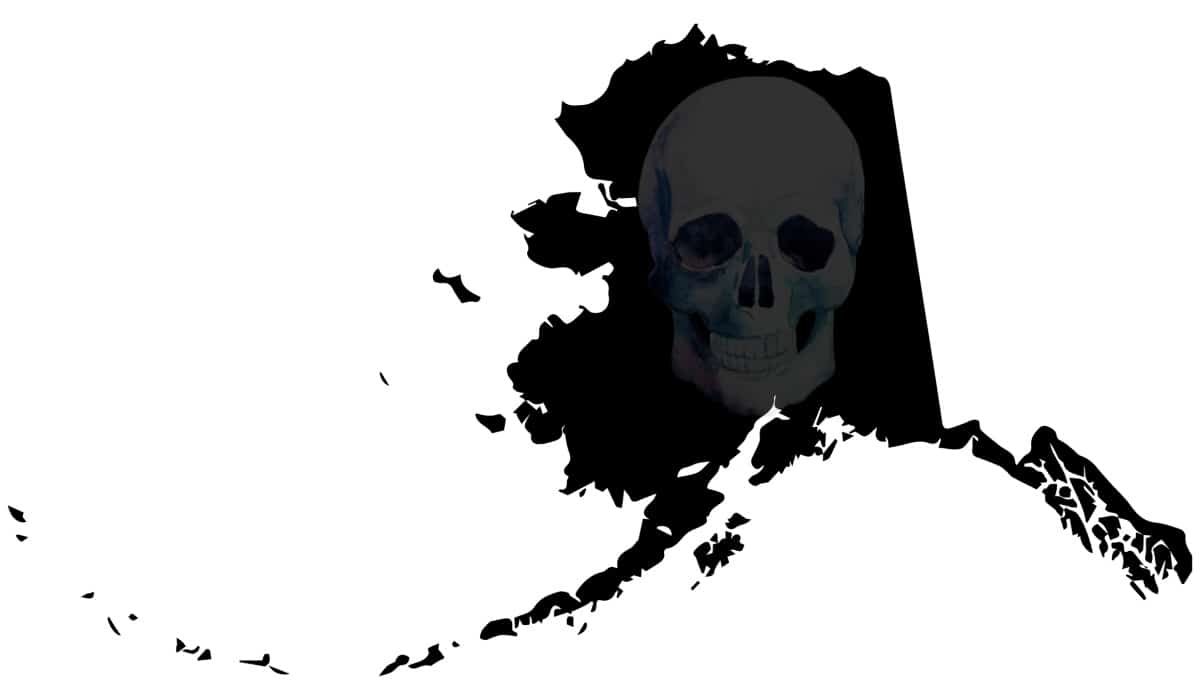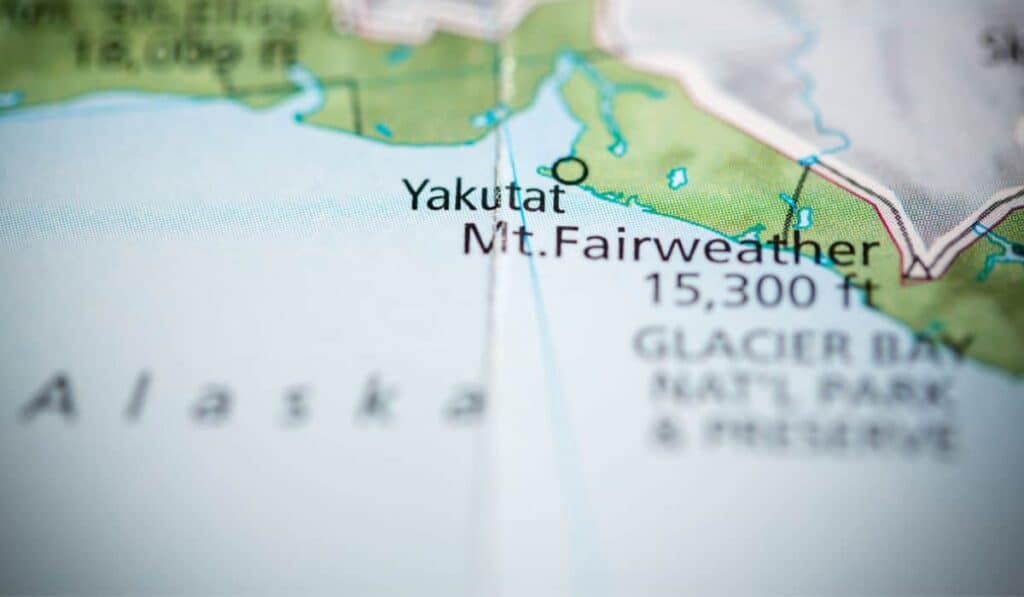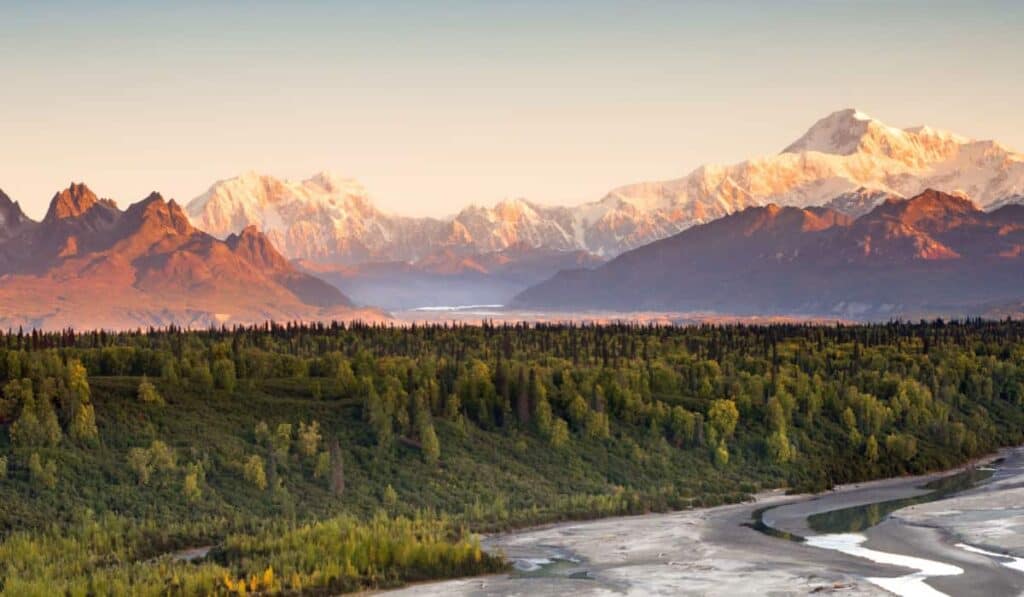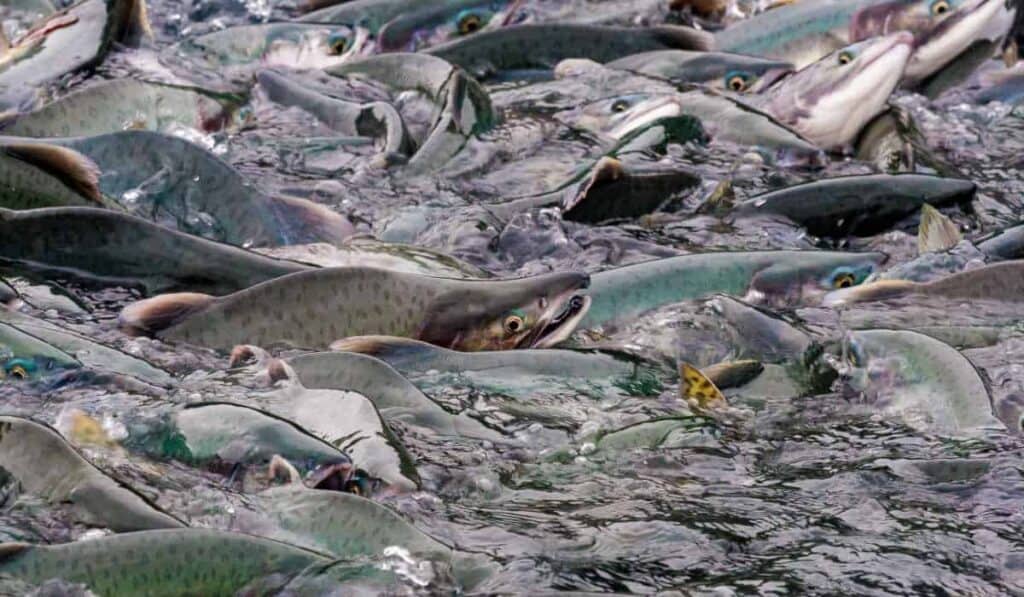Alaska has some of the most picturesque landscapes in the world, with rugged mountain ranges and beautiful glaciers. But some disturbing minds have used this harsh land as their hunting ground.
Serial killers in Alaska have captured the interest of many tourists in the past years (especially when they meet Alaska’s mosquitos and almost lose their own sanity…) but there really aren’t many places to learn about them.
Serial killers in Seattle (and other places) are “well represented” by museums, tours, etc. but that isn’t the case in Alaska.
So, if you’re traveling and in need of some darkness to entertain yourself or scare your companions, we’re here for you!
Just be warned that some of these will make the long nights of Alaska seem much, much, longer. Which will make your vacation seem longer too! You’re welcome!
So, let’s look at some of the most prominent serial killers in Alaskan history.
1. Robert Christian Hansen
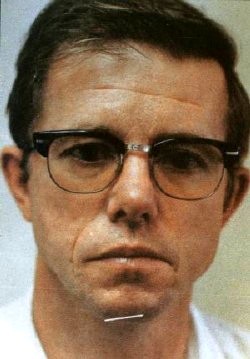
Robert Christian Hansen became one of Alaska’s most prolific killers through a long list of killing sprees that began as early as February 15, 1939, in Estherville, Iowa. Unassuming and well respected within his community at first, underneath this exterior lie dark impulses which earned him the moniker “The Butcher Baker”.
Hansen began his criminal activities by torching down a school bus depot, an act believed to be his reprisal for bullying during his high school years. Seeking new beginnings, Hansen relocated to Alaska with his wife and children seeking an ideal setting that belied any dark presence within him. Here amidst idyllic wilderness, he became immensely popular, yet there he concealed darkness within himself that plagued all aspects of life he encountered there.
His victims – typically young women working in the sex industry – were subjected to unimaginable cruelty at Hansen’s hands. Lured into his house under false promises of payment, Hansen would attack and handcuff these innocent victims before flying them off in remote parts of the Alaskan wilderness with his private plane before hunting them down with hunting rifles as soon as he released them from custody.
Hansen employed this terrifying strategy for over 10 years – from 1971 until his arrest in 1983 – without detection from law enforcement authorities, killing 17 to 21 individuals while assaulting over 31 female targets before eventually leading authorities directly to him through one of his victims who managed to flee and notify them about him. His murderous spree came to an end only when one victim managed to flee and lead them straight back home where authorities eventually apprehended him.
Convicted of multiple murders, Hansen was sentenced to 461 years of incarceration without the possibility of parole – serving as an eyewitness reminder that evil exists even in seemingly idyllic surroundings – long after his imprisonment ended with his death in 2014. Hansen left behind an ugly legacy that forever marred Alaska with violence and terror.
2. Klutuk
Klutuk was an indigenous Eskimo man renowned in Alaskan folklore since 1919 and remembered fondly. Not content to just trapping for food or furs, Klutuk became known for protecting his territory near Kuskowim River and Cook Inlet with violent means for some twenty years, beginning around 1919.
Klutuk met any attempts by white or indigenous intruders onto his territory with lethal force, killing anyone daring enough to violate it with impunity. Klutuk favored using a gun on his victims but there have been several reports that he used an axe as well.
In all, it’s believed he murdered 20 individuals throughout his rule – cementing his horrific notoriety even further.
Klutuk may have stood just 5’4″ and weighed 140 pounds, yet his reputation soared among trappers who dare roam his territory; trappers saw in him an intimidating and deadly predator who haunted the wilderness with deadly precision.
Klutuk managed to remain unnoticed for many years despite several manhunts that were mounted to try and bring him in.
However, his reign of terror came unexpectedly to an end when in 1938 when his body was (or what has been presumed to be his body) was discovered inside a cabin. From all appearances he died of natural causes, a calm end to a life marked by violence and bloodshed.
However, there is still quite a bit of confusion about the body that was found and who it might or might not have been. Fred Hatfield claimed in a 1990 book to have killed Klutuk. While there’s not much evidence to back him up, his claim remains controversial and is within the realm of possibility! Unfortunately, we’ll never know but it does seem that, for whatever reason, Klutuk’s spree ended when the body was found.
3. Thomas Bunday
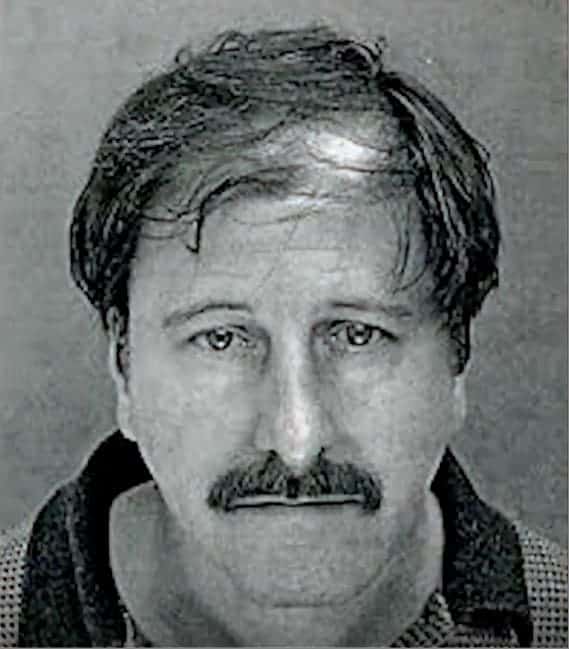
Thomas Richard Bunday was an intriguing (to say the least) individual born September 28, 1948. He spent the first part of life living, apparently normally, in Nashville, Tennessee.
As an esteemed member of the Air Force Bunday was given some license of where he was assigned and ended up at Eielson Air Force Base in Alaska with the rank of technical sergeant.
However, underneath his cool exterior lay an unsettling darkness that plagued him throughout life – especially following personal difficulties arising due to having lived with an estranged spouse that bore another’s child yet remaining together while suffering emotional burnout symptoms. Eventually, this “burn out” would to his seeking therapy which seemed to do little to help.
The first signs of trouble began on August 29, 1979, when 19-year-old Glinda Sodemann vanished without a trace, her body being discovered two months later near a highway.
This was the beginnings of Bunday’s reign of terror during his several girls aged 11-20 vanished without a trace, only to appear (dead) alongside desolate roadways near the base.
Bunday confessed his crimes but, due to legal technicalities, was not immediately arrested.
During the eight day delay from his confession to his arrest he continued about his business and seemed to have no places to flee of evade capture.
However, on March 15, 1983 – just hours after an arrest warrant had been issued against him – Bunday died by driving his motorcycle into a truck about 40 miles outside Wichita Falls Texas. Later recognized as suicide this end seemed fitting for the chilling tale of an Air Force engineer who hid behind his uniform for the murder of nearly a dozen girls.
4. Edward Slomkpe
Slomkpe is Alaska’s first recorded serial killer, though he used the name Edward Krause when committing his crimes.
He would abduct men without any friends or family. Then, he would get their bank documents. He could also use their identities on his travels, allowing him to go undetected. However, his undoing came when he became romantically involved with Celia Gesekus, but she rejected his affections, choosing to be with William Christie. In retaliation, Slomkpe killed Christie.
When investigators found Christie’s body, Gesekus immediately knew that Slomkpe had killed him. Though Edward Slomkpe was found and arrested, he escaped prison. But he didn’t make it far and was shot by a grazier a few days later.
5. Louis D. Hastings
Louis D. Hastings stands as an influential chapter in Alaska’s violent past. While he is technically classified as a spree killer rather than a serial killer he was grotesque enough to earn a place of infamy on this list.
Born July 7 1944, Louis Hastings had moved from California to Alaska seemingly peacefully; yet beneath this placid exterior lay an individual capable of violent outrages. This violent spree started when Louis Hastings unexpectedly shot a friend, Christopher Richards, both in the eye and neck during a visit.
Richards managed to survive and escape unharmed from this horrific assault and warned others in McCarthy, Alaska of the imminent danger posed by Hastings’ murderous rampage, though even this act of bravery wasn’t enough to stop it.
On March 1, 1983, in McCarthy Hastings killed six members of their close-knit community before fleeing on a snowmobile.
Hastings’ motive for his terrible act remains elusive; later he stated it was to stop an illegal gas pipeline project which seems to be largely a reason he invented after the fact.
Whatever his motivation may have been, its effects cannot be ignored; eventually caught, Hastings received an unprecedented sentence of 634 years and remains behind bars today.
6. Michael Silka
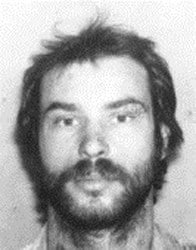
Michael Alan Silka was an outlaw who left an enduring mark on Alaskan history. Following an upbringing characterized by turmoil, and after being accused of his first murder there, Silka relocated to Alaska’s vast wilderness where he quickly become notorious for acts of extreme violence and brutality.
Silka’s grim tale began to come into focus when police, during an ordinary patrol of his cabin, noticed red snow around it. Silka, as per usual with people with his destructive intentions, convinced officers that this blood belonged to a moose; but upon further examination, it turned out to be human blood which belonged to one of Silka’s neighbors whom Silka had fatally shot eight times prior.
Silka had managed to flee before law enforcement could apprehend him and sought refuge at Manley Hot Springs campsite where his reign of terror continued – it is suspected he murdered six more individuals during this timeframe.
Authorities launched an intensive search of Silka and brought in a helicopter as they spread out the search. Silka responded in kind by shooting and killing one of the officers aboard; his act of violence lead to his demise as it resulted in an intense gun battle where Silka eventually succumbed.
No one could ever predict Silka would commit such horrific acts; unfortunately, there remains little known of his personal life and motivations for them. For an accurate picture, further investigation of primary sources such as court documents or news archives would provide useful details that bring his story alive; his tale serves as a chilling reminder that violence lurks even within us all and must never be disregarded or minimized.
7. Israel Keyes
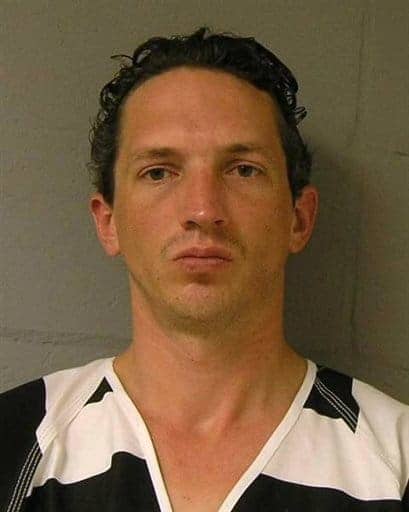
Israel Keyes was born January 7, 1978 and lived his early years in a Mormon household living in an isolated one-room cabin without modern comforts. There were no indicators that his life would spiral downwards until after serving in the U.S. Army and running his construction company out in Alaska while financing himself with bank robberies.
Keyes’ brutal criminal career knew no boundaries or discriminations when it came to victim demographics or geography, targeting all age groups and both gender identities across America. Beginning his spree with four murders in Washington state alone before moving onto a single one in New York. Along the way, he also confessed to bank robberies.
At his final and worst act in Alaska, Keyes committed one of his cruelest crimes – murdering teenager Samantha Koenig as she finished working at a cafe nearby. What started off as an abduction for money turned deadly when Keyes violated and strangled Samantha before placing her body into a freezer and leaving on a cruise vacation.
The FBI has now linked Keyes to 11 known victims; however, his actual numbers could be much higher. As far as anyone can tell, his reign of terror began sometime between the late 2000s or early 2002 until his capture in 2012. Unfortunately for us all – Keyes committed suicide within Anchorage jail cell before we could uncover all his secrets or unravel all his crimes fully – so his exact extent of criminal activities remains shrouded in mystery today.
Conclusion
Alaska’s wild landscape, far from being peaceful or serene, has instead provided the backdrop to several violent episodes perpetrated by some of history’s most notorious killers – from Robert Hansen and Klutuk’s hunting games to their violent territoriality; these dark figures exploited Alaska’s isolation and harsh environment to their advantage and caused havoc throughout.
Despite the fact that these story are a curiosity for many, their crimes leave an indelible stain on Alaskan history as grim reminders of humanity’s capability of depravity.
However, these horrific tales should not obscure the strength, courage, and resilience of their victims and communities affected. Despite perpetrators’ efforts, fearful victims ultimately managed to live life despite them and persevere against hardship in Alaska; its people and landscapes bear witness to human strength in times of hardship.
If you’re lucky enough to visit Alaska’s majestic and rugged land, these stories should serve as a timely reminder of its darker chapters of history. While Alaska offers stunning vistas and picturesque landscapes, its people too have experienced tragedy; and in such times of despair can show the true strength and resilience of places and their inhabitants.

